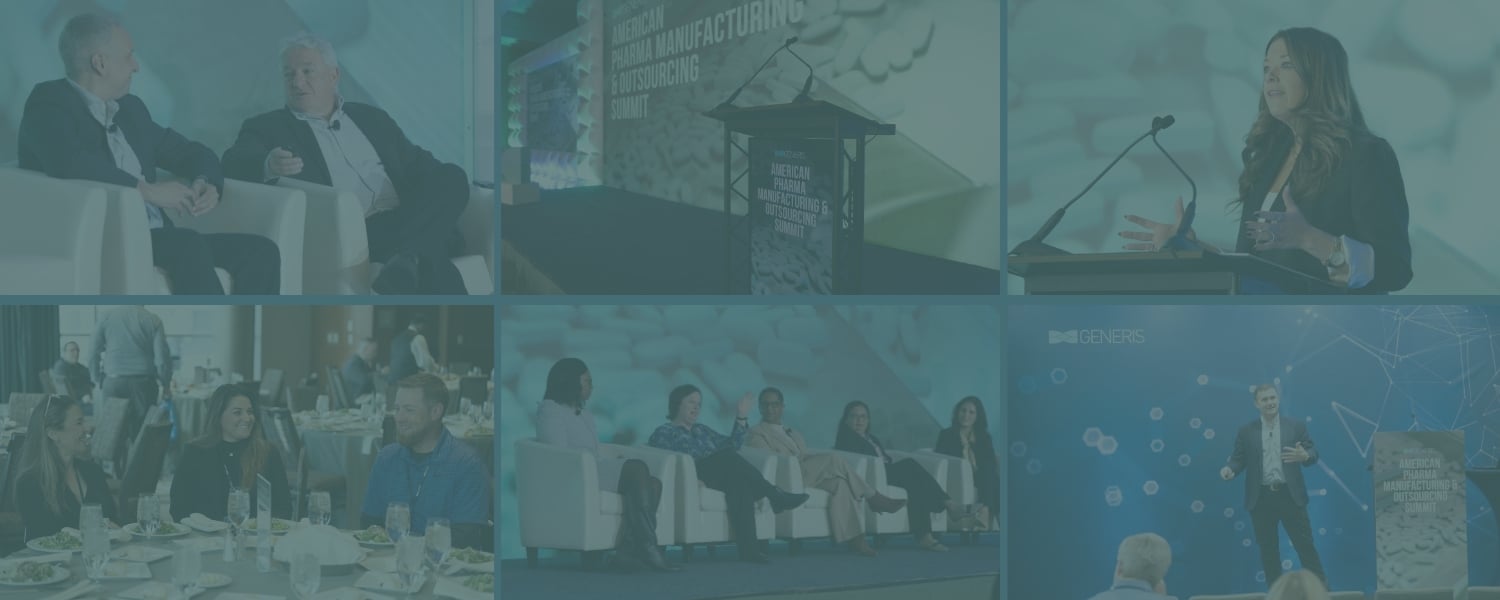 At the 2016 American Aerospace & Defense Summit, Forcam’s Director of Business Development, John Mack, discussed the Smart Factory Transformation Checklist with our panel of aerospace & defense thought leaders, who have witnessed transformations in their own organizations.
At the 2016 American Aerospace & Defense Summit, Forcam’s Director of Business Development, John Mack, discussed the Smart Factory Transformation Checklist with our panel of aerospace & defense thought leaders, who have witnessed transformations in their own organizations.
Read on to hear the lessons they have learned along the way, including how to achieve buy-in, what to automate, how to start your transformation, aligning your smart factory transformation to your business goals, and what metrics to pay attention to.
Panel:
- John Mack, Director of Business Development, Forcam
- Jan Vandenbrande, Program Manager, DARPA
- J. Wade Keith III, Quality & Mission Assurance Staff Executive, Raytheon Missile Systems
- Markus Heinimann, VP, Engineered Product & Process Technology, Arconic
On How to Achieve Buy-in:
Heinimann: “Not surprisingly, acceptance at the top level of the company is quite easy. Telling the leadership that they’re going to get more visibility of what’s happening on the floor, have more effective use of resources, having a clearer picture of whether we’re on track or falling behind, that can only be good. So there was never an issue with getting acceptance from the top. The challenge is getting acceptance through the engineering team, through the workers, all the way down to the shop floor. Because the very first time you come out and say we’re going to try to automate your job, we’re going to try to automate the factory, the first reaction is not necessarily positive. However, I think our company has done a very good job of basically turning it into a challenge.
We’ve made it very clear that this is not about eliminating jobs or replacing humans with robots, this is about allowing our people to work more effectively by having a better understanding of what our equipment is doing, reducing the menial tasks that our people on the shop floor may have been doing it before. We turned it into a challenge where everyone on the shop floor has a chance to submit what parts of their job they would like to change, what they’d like to see automated. And then those ideas were all collected and evaluated, and there were some really good ideas that came out of it that nobody in the plant leadership would have thought of.
Somebody on the shop floor would say, “I spend a lot of time doing this really small piece. If we could get some automation in there to take care of that, it would really make a big difference.” So getting it all the way down to the shop floor and getting every single person in the company involved in coming up with automation ideas and then recognizing the good ideas that came out of that really helped with the buy-in.”
On where to automate
Keith: “For us, one of the bigger drivers of automation is areas where we have the highest variability. That’s a large focus area to impose automation. Especially, we have a union shop, so there are some realities about implementing certain levels of automation. But if you have an area where there are lots of defects and people are getting blamed for it – those folks, no matter what, are willing to give it up.”
On how to start
Heinimann: “Be honest with yourself in your assessment about what are the challenges. Don’t get too intimidated [if you have locations you don’t think you can do anything with]. Identify initial opportunities. Oftentimes, making a few small initial steps – just collecting a little data here and there, all of a sudden generated opportunities that led to process improvements, and by having data and looking at it we were able to find some significant opportunities from the operational perspective, but it was critically important to realize what we had and what we didn’t have and not try to eat the apple in one bite, but take small bites, with a clear picture of where you want to be in the end.”
Vandenbrande: “I’d like to take a different approach to this. What if you started with a clean sheet and said this is really what I want and this will integrate all the new things and all the cool things and this is an opportunity to eliminate a bunch of old processes, possibly old machine tools, that really don’t fit in your business, don’t fit with where you want to go. And then see how you can plug in what you have now into this new scheme
I think that kind of approach, which is actually used in several other domains, is actually a cleaner way, and often a faster way, towards getting a smart factory or the goal that you really want to achieve, which is typically higher productivity, more revenue, whatever the case may be.
But it is actually incremental, so you’re not building on top of band-aids that have existed for many many years. It’s providing a new focus on how you would approach it if you could start from zero.”
On aligning with business goals:
Heinimann: “Fundamentally, any automation strategy or smart factory strategy ought to be aligned with your roadmap. All businesses have strategic plans and you should know ahead of time what markets are you trying to grow into, what programs are you trying to position yourself for. And obviously that all has to overlap. This is not a separate strategy or separate approach, the automation, the smart factory is part of the corporate strategy and it needs to be treated that way so that it’s holistically integrated. If you do it as a stand-alone, that’s separate from everything else, you’re guaranteed to lose.”
On what metrics to pay attention to
Vandenbrande: “Don’t make the measurable important, make the important measurable. And I’ve seen many times that people focus on what they can currently measure and make that important when it really isn’t. So be very aware of what you’re measuring, whether that’s really what you want.”
For more insights into digital transformation in manufacturing, take a look at some of our upcoming events:
%20(1).png?width=773&height=112&name=Generis%20Logo%20full%20Colour%20(Large)%20(1).png)


-Nov-13-2025-01-18-02-9699-PM.png)
-2.png)